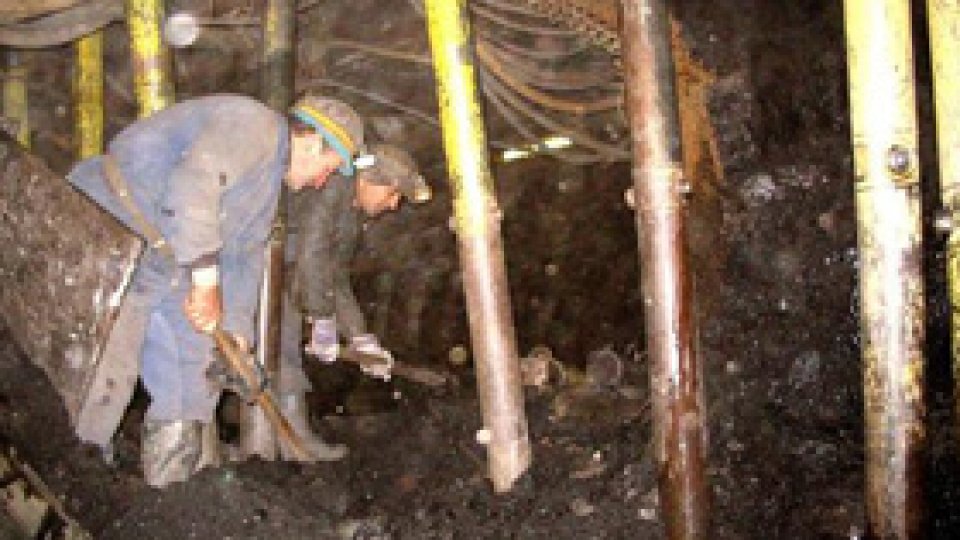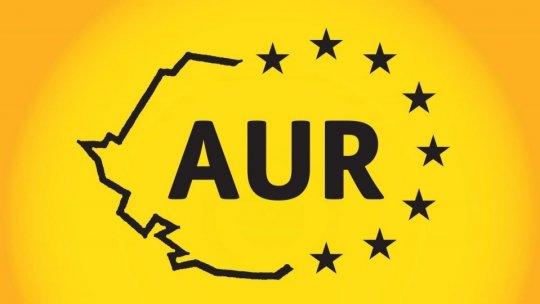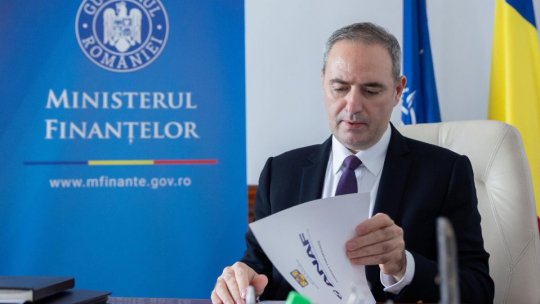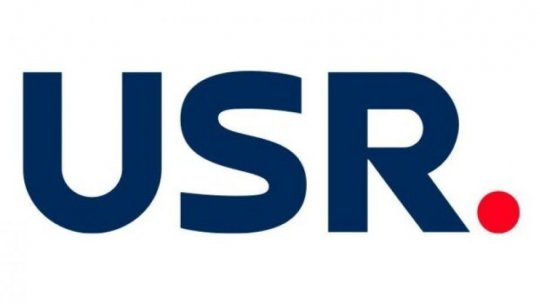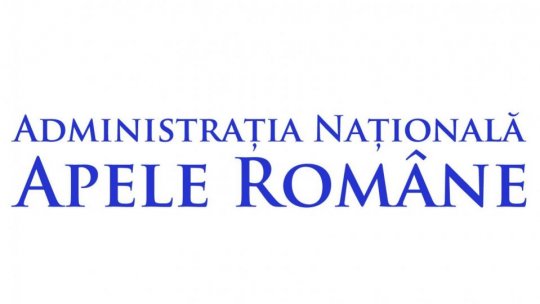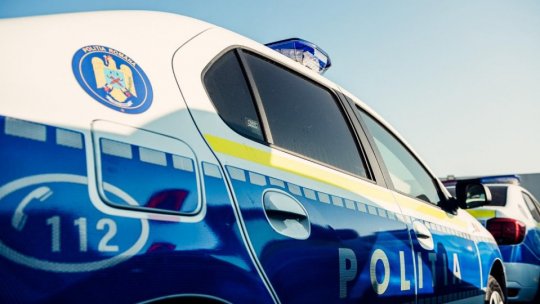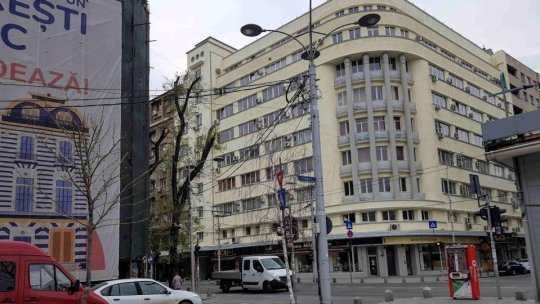The miners’ life in Valea Jiului
The miners from Valea Jiului work in a dust cloud, at a temperature of over 40 C, into a gallery that its scaffold can be touched by their helmets.
Articol de Ilie Pintea, 12 Martie 2012, 14:40
Down there, with their helmets on their heads and with their glances set on the coal wall in front of them, the miners don’t seem to be willing to discuss, but outside, at the locker-room or in their way back home they are easily determined to tell their story.
Nelu Iovu manages a brigade of almost 80 people at the mine Uricani, one of the three mines which will be closed.
After so many years of work, he doesn’t seem anything strange in his daily way; we can even say that the mine became his second home.
“Maybe if I came with you on the field it would seem strange to me, because I am not used to. I got used with the mine, even though it is hard, but a man adapts at everything. We have a place to work and we are healthy, then everything else doesn’t matter. It’s hard nowadays”, tells Nelu Iovu.--fb1
Among the masts and the machineries with names hard to remember, we found also Laurențiu Ghiojan, who was not always a miner.
“Before I came and work in the mine I was a waiter and also a chef, but I entered in mine because I gained better and I needed money. It was harder at the beginning, but I used with everything. There were some shortcomings, because the work in mine is not paid, but I have passed through everything”, told the ex-waiter, who is glad to have two daughters who will have nothing to do with the work in mine.
The mines from Valea Jiului, among the most dangerous places to work
I could not write about miners without seeing with my own eyes their work conditions.
I entered the underground of the mine Uricani, at 400 m depth, to meet the miners at their work place and I walk almost 2 km through galleries until the slaughter from which coal is extracted.
I found the miners in a dust cloud, at a temperature of over 40C, into a gallery that its scaffold can be touched by their helmets.
The map of the mines from Valea Jiului

All those who enter the mine occasionally, as I did, observe that the underground work is far away of being for everybody.
At the harsh conditions, dust and sustained physical work are added and also the lack of materials of strictly necessity or of the investments in the machineries, which determines the miners to use, most of the times, the ingenious improvisations.
In fact, in Valea Jiului, the miner work means to handle with the minimum of necessary materials.--fb2
In these conditions, it is understandable why the miner have revolted when it was taken away their very risk bonus which compensates the dangerous underground work.
According to the Economy Ministry, the additional act at the collective contract of work through which the miners had guaranteed the risk bonus would have been illegal, because it was signed before the adoption of the budget for the National Company of Coal.
Furthermore, the economy minister, Lucian Bote, declared for our broadcasting station that the actual legislation would not allow the according of salary increase within the state societies with loss; this being one of the reasons why the risk bonus indexation was not accepted.
The syndicalist replied that the indexation of this bonus does not constitute a salary increase, and after another negotiation round at Bucharest, the miners’ leaders have convinced the government regarding their point of view.
After five days of general strike, the miners have returned in mines in the night between Friday and Saturday.
They returned to the same unsecure mines, but with an extra feeling; the satisfaction of successfully defending their rights.
The miners’ protests, generated by the social problems
The protests started from the social problems that the miners form Valea Jiului are confronting of, and the fact that the mine work is here the main activity determined that its difficulties to affect the entire region.
After the miner conflicts of the 90’s, which led to miners’ stigmatization for the violence from the capital, the syndicalist understood that the dialogue is the only way to solve their problems.
As consequence, in the last years, Valea Jiului met a “social peace”, even though the miners have accepted a series of compromises related to the mining restructuration, which decreases from year to year the number of miners and also, they did not receive any salary increase for 5 years.
The measure that confused for many years the mining in Valea Jiului was the decision without precedent in 1997 of the government to collectively fire almost 20000 miners, in times where they were neither alternatives of finding places to work, nor the long-term social protection measures.
With the money from the World Bank, which compensates their work place loss, the miners from Valea Jiului were invited to voluntarily assign to the availability program, whereof no one knew more than the fact that suddenly it would bring some good millions.
Not even at governmental level no one knew much about what would had to bring these availabilities, whereof was heard in Great Britain and Germany, countries taken as model, but without a close analyze regarding this precedent.
The finding of another place to work in Valea Jiului was equivalent with the struggle of surviving after the availabilities from 1997, and the tens of protests and desperate acts of the ex-miners that were asking for a job gave the gravity measure from the area.
Overwhelmed by the social crisis in Valea Jiului, the government continued to act without a long-term strategy, being satisfied that, after every protest, to accord some tens of urgency helps.
Meanwhile, the World Bank was talking with enthusiasm about the professional conversion of the ex-miners and about their transformation in successfully enterprises.
The collective firings continued until last year, when 900 miners became redundant, and will continue until 2018, with European funds destined to the close of unsustainable mines.
Although it is continuously discussed about the energetic independence of Romania, the resources from the underground of Valea Jiului are considered too expensive to be exploited.
Three mining exploitations –from the seven that have remained –will be closed in the next years, and the ones that will functionally remain will be included within the energetic complex Hunedoara, whose foundation is talking about for over a decade.
The 100 lei does not solve the problem from Valea Jiului
After the massive redundant from Valea Jiului, all the governments that have succeeded at the leadership promised alternatives for mining, but all without any clear ending.
The World Bank and the government allocated hundreds of millions of dollars for the professional conversion of the ex-miners and also to teach them how to open businesses with the money received at the firing, but the results were null.
Very few firms opened activities of production in the area, and the excess of the workforce was overtaken by the social insurances, meanwhile the private initiatives of the ex-miners have failed from various reasons.
Very close to the National Park Retezat, Valea Jiului was considered for a long time a very good field for tourism. But the tourism was not supported by the investments within the infrastructure and by budget financing, so that another mining alternative seems to be down.
The projects with European financing, which have bring in the last years over 20 millions euro in the cities of Valea Jiului, did not generate enough places to work.
Valea Jiului also had a special governor, during Năstase’s government, and a development strategy which had on the paper a value of one milliard dollars.
But none of the projects of this strategy have led to accomplishment.
The miners have the salary bigger with 100 lei, but the National Company of Coal, which receives subsidies only for the mines that will be closed, is confronting furthermore with a massive debt to the state of over one milliard euro.
Alexandra-Diana Mircea
MTTLC, Bucharest University

